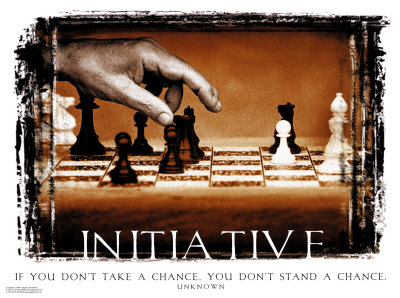At the heart of the pyramid we find the 11th secret of success. It is not an accident that “skill” is right in the middle. Look at all that surrounds it. With “alertness” and “initiative” holding it up, sandwiched in between “condition” and “team spirit”, and the foundation for the second tier of the pyramid, “skill” is truly the heart of it all. Symbolically, it is truly our heart and soul that pushes us to improve our skill. It is through positive conditioning that we tell ourselves we want to improve, we want to be better. We are inspired by our team and create purpose for all we do.
 For Wooden, he believed skill meant being able to execute all parts of your job. For instance, he had great shooters but they couldn’t get open fast enough to make a basket. Then he had other players who could move fast but couldn’t shoot a lick. True skill means you are able to both- quickly and effectively. One would think that someone with experience and more practice would be able to do this, but that isn’t always the case. Wooden said that although he valued experience, he would rather have someone with a lot of skill and little experience than a lot of experience and a little skill.
For Wooden, he believed skill meant being able to execute all parts of your job. For instance, he had great shooters but they couldn’t get open fast enough to make a basket. Then he had other players who could move fast but couldn’t shoot a lick. True skill means you are able to both- quickly and effectively. One would think that someone with experience and more practice would be able to do this, but that isn’t always the case. Wooden said that although he valued experience, he would rather have someone with a lot of skill and little experience than a lot of experience and a little skill. Why might he feel this way? Experience creates fear….experience means doubts…experience means wisdom, but it could also mean limiting your desire to learn more.
So, how can we use our skills and experience to make us more successful people? In your lives I think it goes back to your ability to create specific goals and your ability to visualize. True visualization is not an easy task.
There are a few things that I have learned that I think make people truly “skillful”.
The first is to be a great listener. That means, when you have a lot to say listen to someone else first. Listening is a skill.
The second is to remain quick in your decisions. I don’t mean you walk into a restaurant and you know what you want before you sit down type of decisions, but maybe that’s the best example. When you know what you want and stick to your decisions, your actions will follow. There is no second guessing when you know what you are doing is right.
The next skill is the process of visualization. To do it well is no easy feat. Often we think visualization is only necessary in the sports’ world as we visualize ourselves throwing our arms to the sky in a moment of victory or scoring the winning goal in the championship game. But to truly visualize means knowing what your mind and body must do to get the desired result. Preparation is key. Knowing your desired outcome through all aspects of the race, the presentation, the homework assignment, the job interview is paramount.
I am somewhat of a news junkie. I love to read news, I love to watch news and I love to study the role of the media. While studying to be a journalist I began to understand that I needed to concern myself more with acquiring the skill of knowing my desired outcome in developing a story rather than solely on my writing style, length of copy, word choice, etc. What I needed to do is understand that if I wanted to create a story full of emotion, connection and compassion I would have to make sure my questions led me in that direction. I would need to learn to observe, listen, hear and understand my subject better than I ever thought. When learning about our great newscasters of today I came to understand that most of them create 100’s of questions to develop stories rich in detail and emotion. Watch the great newscasters, they know what they want when they approach someone. They don’t waver, they are quick to decide what to ask next and they truly listen. They listen for what we want to hear more about and what will draw their audience into the news.
Consider how this connects to your practice of visualization. Do you use your mind so that your body will follow? Do you listen to the needs of what is best for you, for the team? Do you see your goals through your mind’s eye, or do you watch yourself as if you were someone else? Do you remain specific, clear and focused on what you want to achieve? Does every decision you make reflect the journey you want to take to become a more successful person?
I have actually taken a couple of classes in the art of helping athletes visualize successfully. It is a hard practice and one that takes experience to understand how to execute effectively. I often find the explanations a bit daunting, but I came across these and thought they were the most clear. I can not encourage you to practice this enough. It works in everything you do. Know what you want to get out of every experience.
The keys to effective visualization:
Visualize what you want- not what you don’t want.
See the outcome as if it was already complete.
Fill your visualization with vivid detail and rich emotion.
Repeat your visualization consistently.
Infuse your visualizations with people you love and care about.
The last SKILL is that of “letting go”. Wooden felt that 95% of his job was done in practice. He had to feel confident that his players were ready for every game situation based on their success in practice. When they got to the game he “let go” as a coach, putting all trust and faith in his team. When you get to a race, how much faith do you carry with you? How ready, prepared, and complete do you feel physically AND mentally?
Here is a great quote to guide you through these thoughts, “Letting go is a product of faith. Faith enables you to feel complete today, yet strive for more tomorrow.”
Written by Coach Clendenen






